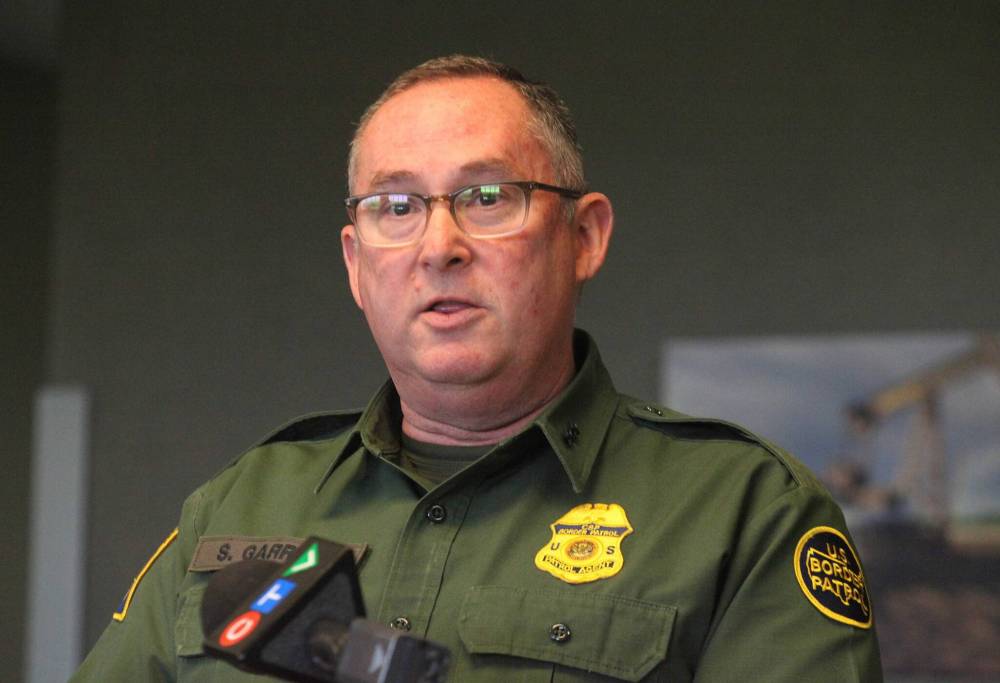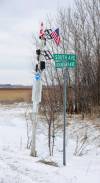Family’s tragic end, soaring number of illegal crossing attempts prompt warnings from both sides of border
Read this article for free:
or
Already have an account? Log in here »
To continue reading, please subscribe:
Monthly Digital Subscription
$0 for the first 4 weeks*
- Enjoy unlimited reading on winnipegfreepress.com
- Read the E-Edition, our digital replica newspaper
- Access News Break, our award-winning app
- Play interactive puzzles
*No charge for 4 weeks then price increases to the regular rate of $19.00 plus GST every four weeks. Offer available to new and qualified returning subscribers only. Cancel any time.
Monthly Digital Subscription
$4.75/week*
- Enjoy unlimited reading on winnipegfreepress.com
- Read the E-Edition, our digital replica newspaper
- Access News Break, our award-winning app
- Play interactive puzzles
*Billed as $19 plus GST every four weeks. Cancel any time.
To continue reading, please subscribe:
Add Free Press access to your Brandon Sun subscription for only an additional
$1 for the first 4 weeks*
*Your next subscription payment will increase by $1.00 and you will be charged $16.99 plus GST for four weeks. After four weeks, your payment will increase to $23.99 plus GST every four weeks.
Read unlimited articles for free today:
or
Already have an account? Log in here »
Hey there, time traveller!
This article was published 12/10/2023 (753 days ago), so information in it may no longer be current.
GRAND FORKS, N.D. — Illegal crossings at the Manitoba border into the United States have skyrocketed since an Indian family froze to death in a field near Emerson in 2022, raising fears other desperate migrants could suffer the same fate, as winter’s extreme conditions approach.
During a news conference in Grand Forks Thursday, U.S. Customs and Border Patrol and Manitoba RCMP officials revealed illegal crossings by foot have jumped drastically recently, from 90 people apprehended in 2021, down to 81 in 2022 and then up to 237 in the first eight months of 2023.
“We’re here today to relay the message to any would-be crossers that it is not safe. You can get severely injured, or you could die.” –RCMP Sgt. Lance Goldau
The officials said the migrants are largely attempting to enter the U.S. for economic reasons, fleeing devastating poverty in search of a better life. They come from all over the world; many from Mexico, Honduras and India. Others, like the 41 apprehended this year from the United Kingdom, were allegedly attempting to smuggle counterfeit goods into the U.S.
“We’re here today to relay the message to any would-be crossers that it is not safe. You can get severely injured, or you could die. Anyone attempting to cross the border between the ports of entry is faced with walking for long periods of time in open areas with high winds, deep snow and frigid temperatures,” said RCMP Sgt. Lance Goldau, commander of the integrated border enforcement team that works out of the Altona detachment.
“While we have the equipment and technology to monitor cross-border movement, the chances of rescue in these extreme circumstances is remote.”
Goldau pointed to the brutal January 2022 deaths of Jagdish Baldevbhai Patel, 39; his wife, Vaishaliben Jagdishkumar Patel, 37; their daughter, Vihangi 11; and three-year-old son, Dharmik, as the fate that could await anyone attempting to cross the border, as the deep freeze nears.
Jagdish Baldevbhai Patel, 39; his wife, Vaishaliben Jagdishkumar Patel, 37; their daughter, Vihangi 11; and three-year-old son, Dharmik, died in January 2022 while attempting to cross the Canada-U.S. border. (Handout)
RCMP officers found their bodies 10 kilometres east of Emerson, just 12 metres from the Canada-U.S. border. They had left their home village of Dingucha in the western state of Gujarat, India, reportedly arriving in Toronto on visitor visas.
An American, Steve Shand, who was waiting to pick them up just over the border in North Dakota was arrested shortly afterward; his case is still before the courts.
RCMP are still investigating the organization that led the family from Toronto, where they arrived from India, to the Manitoba border.
Indian authorities have started the process to have two Canadians extradited to face charges, police in that country said earlier this year, while two men in India were arrested in January for their alleged roles in the smuggling case.
“This tragic event remains in our consciousness — here’s a family trying to change their circumstances, with their last moments likely ones of fear and hopelessness, facing the bleak prairie conditions,” said Goldau.
Grand Forks sector CBP chief patrol agent Scott Garrett’s agents are responsible for patrolling almost 1,400 kilometres of northern border in North Dakota, Minnesota, Wisconsin and other U.S. states.
Border officials said most migrants apprehended coming across the Manitoba border in 2023 came from Mexico — 150 in total.
‘Terrified’ migrants happy to see American agents
Nine men were found in a flooded bog near Warroad, Minn., at about 5 a.m. on April 18 after crossing the border in an organized smuggling operation, officials said at the time.
Nine men were found in a flooded bog near Warroad, Minn., at about 5 a.m. on April 18 after crossing the border in an organized smuggling operation, officials said at the time.
Supervising Border Patrol Agent Richard Besecke was one of the first to find them.
“It was as the ice was starting to melt, and it was watery underneath and frozen on top,” he said Thursday, describing the rescue.
“We had one patient who was already hypothermic and having heart problems because of it. Another one had frostbite on his feet.
“They were just screaming for help, they were terrified, they were so glad to see us.”
The nine men, ranging in age from 19 to 46, were dropped off on the Manitoba side and told it would be a short walk before they would be picked up by someone in the U.S.
However, it turned into an all-night ordeal, with the men unprepared for the conditions.
The group walked through a forest near Sprague, just north of the border, approximately 150 kilometres southeast of Winnipeg, while the temperature dropped to about -5 C overnight.
“The smuggler they had worked with had told them it was a 20-minute walk and a car was going to be waiting for them. They had no idea it was going to be four miles with multiple frozen canals, frozen swamp ice; they were completely unprepared for it,” Besecke said.
“The smuggler lied to them horribly and just took their money and ran, it was a horrible shame.”
Besecke and other American authorities found the men in a flooded bog south of the border, after one of the migrants made an emergency phone call that was received by RCMP.
American law enforcement discovered seven of them were Mexican nationals, but could not determine where the other two men had come from.
— Erik Pindera
Garrett said the migrants his sector’s agents have apprehended tend to pay a smuggler in their home country as much as US$30,000 to get them on a plane to one of Canada’s major airports as visitors.
The migrants then make their way to Manitoba, where the unscrupulous smugglers get them near the border.
There, the smugglers often claim the migrants are just a short walk across the border, where they will meet someone with a waiting vehicle or other means to take them deeper into the U.S.
In some case the migrants are successful in crossing undetected, but border agents often find and apprehend badly injured people, many simply under-dressed and tragically unprepared for terrifying winter extremes.
After getting them medical attention, the agents take the migrants into custody and process them, before turning them over to immigration officials who send them back to their home country or allow them to make an asylum claim.
Garrett said he thinks that migrant smuggling organizations are seeing “chaos” at the southern American border with Mexico and decide to try the northern route, where there are fewer agents stationed overall.
“It’s all being done by smugglers. This isn’t somebody in Mexico or Guatemala thinking, ‘Oh, let’s fly to Canada today and try to get into the United States.’ It’s always been done through some organization… they see the people as dollar signs. That’s the way these people come in,” he said.
“I think some of it is that the smugglers are seeing an opportunity up here that they don’t have at the southwest border.”
ERIK PINDERA / WINNIPEG FREE PRESS Grand Forks sector Chief Patrol Agent Scott Garrett said his law enforcement agency is focused on investigating smuggling organizations. 
The border patrol official added that the agency’s sources have said some smugglers are duping would-be migrants into believing their final destination is Canada.
“Unscrupulous smugglers… are enticing people to come up to Canada, they say, ‘Come up to Canada, we have jobs for you in Canada.’ They get to Canada and they say, ‘Oh, but the job’s in the United States,’” said Garrett.
“Then they try to smuggle them back down into the U.S.”
Agents have been conducting increased patrols in recent years, using advanced technology including drones, thermal imaging and other surveillance techniques, showing off the agency’s equipment to reporters Thursday.
“The most effective way to reduce migrant injuries and deaths is through the prevention and deterrence of illegal entries,” he said.
Garrett added that his law enforcement agency is focused on investigating smuggling organizations.
“Our No. 1 target is really to identify who those smugglers are. There’s usually someone on either side of the border that’s facilitating the smuggling, so we want to identify the entire organization, from the U.S. into Canada,” he said.
“So far, we have encountered, generally speaking, migrants who are coming here for a better way of life, looking for a way out of poverty…. But the fact is, the more people that do that… the more we get tied up processing them and not looking for the bad guys.”
erik.pindera@freepress.mb.ca

Erik Pindera is a reporter for the Free Press, mostly focusing on crime and justice. The born-and-bred Winnipegger attended Red River College Polytechnic, wrote for the community newspaper in Kenora, Ont. and reported on television and radio in Winnipeg before joining the Free Press in 2020. Read more about Erik.
Every piece of reporting Erik produces is reviewed by an editing team before it is posted online or published in print — part of the Free Press‘s tradition, since 1872, of producing reliable independent journalism. Read more about Free Press’s history and mandate, and learn how our newsroom operates.
Our newsroom depends on a growing audience of readers to power our journalism. If you are not a paid reader, please consider becoming a subscriber.
Our newsroom depends on its audience of readers to power our journalism. Thank you for your support.










